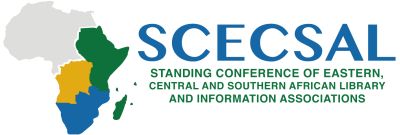
General information about Mzuzu University Library Learning and Resource Center
Introduction
Mzuzu University Library and Learning Resources Centre (MULLRC) is a modern library that boasts a collection of mainly print and electronic resources. The print collection is predominantly comprised of books. However, academic journals, newspapers and other periodicals are also found. Conversely, the electronic collection is dominated by academic journals which the Library subscribes to, those accessed on the Open Source Platform, and e-books. The Library's service range includes user and reference services which is provided by a well-trained and dedicated team of experts that include professional and paraprofessional librarians, Information and Communications Technology (ICT) staff, and others. Although the physical Library opens for 14 hours a day during week days and 4 hours a day during weekends, the growing collection of the electronic collection means that most of the Library's resources remain accessible to clients 24 hours a day throughout the year. This makes the Library convenient to use, particularly to the ever-expanding body of Open and Distance Learning (ODL) and postgraduate students, many of whom stay away from campus and remain active with their studies throughout the year. MULLRC mainly serves undergraduate students enrolled in the face to face mode of delivery and the ODL mode. However, a flurry of new postgraduate programmes within the University implies that the postgraduate student community which has for long remained low is steadily increasing. Academic staff have for long been another important client base of the Library although administrative and non-academic staff, particularly those keen to upgrade their qualifications, have also patronised it. The Library has also received numerous requests from outsiders mainly those working in industry in the Northern Region and students studying with private colleges and universities both locally and internationally. However, only a few of these requests have been granted over the years due to limited sitting capacity and a thin book collection. The proliferation of smartphones, tablet PCs (iPads, Galaxy tabs, etc.), desktop PCs and laptop computers has seen the information landscape steadily tilting towards the provision and access to electronic resources and services. The Library is progressively responding to these changes by putting up relevant physical and technical infrastructure, formulating appropriate policies, and recruiting requisite human resources to ensure that it responds accordingly to these changes. However, the fire disaster of December 2015 that saw the Library losing a print collection of over 45,000 volumes has also compelled the Library to focus more on building an electronic (digital) collection not only as a way of mitigating the impact of a similar disaster but also the space limitation that came with the occupancy of a much smaller temporary library building. Building a digital library was also viewed as an easier and faster option to building a print collection.
Background Information
MULLRC started its operations in January 1999 upon the opening of the University. It initially started operating from the current Geography Laboratory whilst renovations to the Old Library Building were being finalised. Following the completion of the renovations, the Old Library Building with a sitting capacity of 300 was finally occupied in April 1999. Mzuzu University is currently housed in the premises of the old Mzuzu Teachers Training College (MTTC). Due to this historical link, the Library inherited part of the old print collection of the old MTTC. Besides, the Library has made some strides in growing its print collection through a number of avenues. These include purchase through budgeted for resources and donations. However, donations have been the backbone of the collection development activities of the Library, accounting for 80-90% of all print resources. The major benefactors of the Library have been Book Aid International, Press Trust, Anglia Book Distributors, and Books for Africa, among others. In its quest to respond to the needs of its clientele, the Library has since its inception maintained a sizable collection of electronic resources in a form of e-books and e-journals. E-journals are subscribed to through the Malawi Library Consortia (MALICO) and others are freely accessed through the Open Source Platform. Similarly, some of the e-books available are subscribed to through the e-granary database whilst others are freely accessible through the Open Source platform. The tremendous progress registered so far has been made possible because the Library has placed a lot of emphasis on building a highly skilled and vibrant human resource base. In this regard, the Library has grown from a workforce of less than 10 people at the time of its inception to a team of over 30 now. This team comprise of professional librarians, paraprofessional librarians, ICT staff, security personnel, and administrative staff. Moreover, the Library has placed much emphasis on formal training and continuous professional development to ensure that its staff acquires the necessary knowledge and skills to enable them perform to the desired levels. This has resulted in staff being sent for training at all levels: certificate, diploma, bachelors degree and even postgraduate level training.
Our client Base
Students form the main client base of the Library. As of October 2016, the University had a student enrolment of 4,067 spread across six faculties namely Education; Environmental Sciences; Health Sciences; Tourism, Hospitality and Management; Science, Technology and Innovation; and Humanities and Social Sciences. However, the student population is predicted to double to 8,000 by the year 2020 (Mzuzu University Strategic Plan 2016-2020). This will be propelled by the introduction of new academic programmes, and the delivery of current and future programmes through the face to face and ODL mode. The current student population is male-dominated, with 2,585 (63.6%) males enrolled as opposed to only 1482 (36.4%) females. Nevertheless, recent trends show that the gender gap is narrowing with 655 (46.6%) females enrolled in the 2016/17 academic year up from 343 (35.6%) the previous academic year. If the current enrolment trends are sustained, then it is anticipated that the existing gender gap will vanish in the next four years. In fact the Mzuzu University Strategic Plan covering the years 2016 to 2020 is advocating for the achievement of a male to female enrolment ratio of 50:50. Education is by far the largest faculty within the University, accounting for over half 2,267 (55.7%) of the entire student enrolment. The majority of the students enrolled in the Faculty of Education 1,358 (59.9%) are pursuing their studies through the Open and Distance Learning (ODL) mode. It is projected that the number of students in the University pursuing their studies through the ODL mode will equal or even surpass those pursuing their studies through the face to face mode within the next four to five years as the University's 2016-2020 strategic plan envisages the delivery of both current and future academic programmes through the face to face and the ODL mode. Student enrolment in the faculties of Environmental Sciences (626; 15.4%), Health Sciences (421; 10.4%), and Science, Technology and Innovation (395; 9.7%) are almost evenly matched. However, enrolment is least in the faculties of Humanities and Social Sciences (210; 5.2%) and Tourism, Hospitality and Management (148; 3.6%). The postgraduate student community is currently low, 143 or 3.5% of the entire student population. Nonetheless, with the evident increase in the number of new postgraduate programmes (10 Masters and 4 PhD programmes introduced over the past 4 years) and more new programmes planned (Mzuzu University Strategic Plan, 2016-2020), it is expected that the number of postgraduate students will vastly increase in the next four years. Academic staff are another important active client base of the Library. As of February 2017, the University had a full-time academic staff population of 183. Nevertheless, the University also recruits a good number of adjunct academic staff who serve the University for limited periods of time. Such kind of staff are accorded membership of the Library for the duration of their contract. Other members of the University community who patronise the Library from time to time are members of the Management team (7), Administrative staff (15), and non-academic staff (259). Besides, the Library grants permission to a select number of researchers resident in Northern Malawi, students studying with local and foreign tertiary institutions based in Northern Malawi, family members and spouses of Mzuzu University Staff, among others, to use the Library for a specific period of time. The Childrens Library Section also caters for pupils enrolled in primary schools in and around Mzuzu City as part of the social responsibility function of the Library. Similarly, the American Corner Library (another section of the Library) provides some specialised services and programmes such as Internet access, photocopying, and education advisory services that cater for the Mzuzu University Community and surrounding communities
Our Collection
MULLRC embraces a hybrid collection comprising print and electronic resources. The print collection includes monographs, reference sources (dictionaries, encyclopedias, maps, etc.) and special collection that mainly consists of Malawiana materials (information resources written by Malawians and about Malawi). The print collection exceeded 45,000 volumes before the Old Library Building was gutted down by fire in December 2015. This incident meant that the collection development exercise of the Library has had to start all over again. As of now, 39,000 volumes have been acquired and processed. This has been made possible mainly through donations of individuals, companies, universities and organisations both locally and internationally. It is anticipated that in five years time the collection will have grown to over 74,000 volumes. Although electronic resources have been provided by MULLRC since its inception in 1999, the fire incident of December 2015 made the Library to make deliberate efforts to acquire and provide electronic resources to its clients at even greater proportions than before. To this end, the Library plans to grow its electronic journal collection in the next five years. This would also benefit the growing postgraduate student population. Besides e-journals and e-journal databases, the Library has acquired an Outernet and e-granary facility, TEAL Database, and further plans to reinvigorate its institutional repository. Both of these steps would assist in overcoming Internet connectivity challenges that persist at the institution due to limited bandwidth. The Library further plans to offer its services through mobile phones. It is expected that this initiative would boost usage of the available electronic resources as it would overcome the shortage of PCs in the Library on top of making the resources accessible to clients throughout the day. Much as part of the collection is acquired through purchase, the Library has relied on various partners in its collection building exercise. Companies, universities, individuals and organisations have all rendered their support. Whereas the partners are many, the biggest benefactors of the Library are Book Aid International of the United Kingdom, World Vision International, University of Strathclyde (UK), Virginia Polytechnic University (USA), Anglia Book Distributors (Malawi), National Library Service, Malawi National Aids Commission, and various government ministries and departments. The Library provides access to most of the electronic resources through subscription that are paid through MALICO. However, other valuable open access e-journal databases are freely provided through arrangements with various publishers.
Staffing
The Library has a staff complement of 33 permanent members. Five (5) are senior librarians, 5 are in middle management positions (chief and senior library assistants and computer technicians) whilst the rest are in lower positions (library assistants, computer technicians, and commissionaires). Most of the senior staff have been trained to masters level with one attaining a PhD. However, the aim is to train more staff to PhD level. This would make it possible for the senior staff not only to provide better leadership but also properly serve the growing number of academic staff and postgraduate students. Similarly, a growing number of staff in the middle strata have acquired bachelors degree. Whilst some staff in the lower levels have acquired diplomas in various disciplines, the numbers remain low as only 4 out of 25 have attained that qualification. Ideally, all library assistants and computer technicians should have a minimum qualification of a diploma. The Library hence commits itself to address this problem by training at least half the number in the next five years. Plans are being drawn to construct a new library building by the year 2019. Moving into a bigger purpose-built library will enable the Library to offer more specialised services. This, coupled with the projected increase in the student population (8000 by 2021), will require the hiring of more staff. The Library plans to close the human resource gap through engagement of more students especially those pursuing postgraduate qualifications and hiring of more temporary staff.
 Malawi Government (Ministry of Ecuation)
Malawi Government (Ministry of Ecuation) International Federation of Library Associations and Institutions
International Federation of Library Associations and Institutions Standing Conference of Eastern Central and Southern African Library and Information Associations
Standing Conference of Eastern Central and Southern African Library and Information Associations  Book Aid International
Book Aid International Electronic Information for Libraries
Electronic Information for Libraries  Virginia Tech
Virginia Tech The world Bank Tertiary Education
The world Bank Tertiary Education